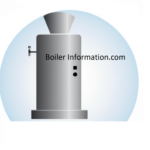Superheaters are a critical component of industrial boilers that allow for efficient heat transfer and greater efficiency. They are used to increase the temperature of the steam produced by the boiler beyond the saturation point. This is done by passing the steam through a series of tubes that are heated by the flue gases from the combustion process.
The superheater works by transferring heat from the flue gases to the steam, which causes the steam to evaporate and increase in temperature. The temperature increase is a function of the amount of heat transferred from the flue gases as well as the amount of steam that passes through the superheater.
The superheater consists of a series of tubes that contain the steam being heated. These tubes are arranged in a square or rectangular configuration, with the flue gases from the combustion process being passed through the tubes. The flue gases are hotter than the steam, so they transfer heat to the steam as it passes through the tubes.
The superheater is usually arranged in two sections: the primary superheater and the secondary superheater. The primary superheater is the first section and is typically the hottest area in the boiler. This is where a majority of the heat transfer takes place. The secondary superheater is a cooler area and is typically used to further increase the temperature of the steam.
The efficiency of the superheater depends on several factors, including the type of fuel being burned, the size of the boiler, and the design of the superheater. By optimizing these factors, the efficiency of the boiler can be increased, resulting in more efficient heat transfer and greater efficiency.
In conclusion, the superheater of an industrial boiler is a critical component that allows for efficient heat transfer and greater efficiency. It works by passing the steam through a series of tubes heated by the flue gases from the combustion process. By optimizing the design of the superheater and the other factors mentioned above, the efficiency of the boiler can be increased, resulting in more efficient heat transfer and greater efficiency.
